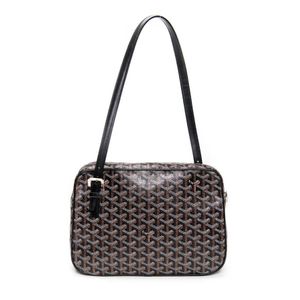1866 London Sterling Silver Cake Basket by Hunt & Roskell
You must be a subscriber, and be logged in to view price and dealer details.
Subscribe Now to view actual auction price for this item
When you subscribe, you have the option of setting the currency in which to display prices to $Au, $US, $NZ or Stg.
- Hunt & Roskell - Hunt & Roskell, were a firm of manufacturing and retail jewellers and silversmiths, founded in 1843 by Robert Roskell a famous pocket watch maker from Liverpool, and John Samuel Hunt who had previously been in partnership with silversmith Paul Storr, trading Storr & Co. (1819-22), Storr & Mortimer (1822-38), Mortimer & Hunt (1838-43) and then Hunt & Roskell (1843-97).
Hunt & Roskell had retail premises at 156 New Bond Street and a manufacturing workshops at 26 Harrison Street, near Clerkenwell.
They were among the finest of the Victorian silversmith, manufacturing in the high Victorian style, and their craftsmanship was recognised by their appointment as silversmiths and jewellers to Queen Victoria.
John Samuel Hunt continued as a partner until his death in 1865, when he was succeeded by his son, John Hunt (d.1879). Robert Roskell remained in the firm until his death in 1888. In 1889 the firm was taken over by J.W. Benson and continued in business as Hunt & Roskell Ltd until c.1965. - Sterling Silver - Sterling silver is a mixture of 92.5% pure silver and 7.5% of another metal, usually copper. Fine silver is 99.9% pure silver, and is relatively soft and the addition of the very small amount of copper gives the metal enough strength and hardness to be worked into jewellery, decorative and household objects.
- Diaper Motif - The diaper motif is a repeating geometric pattern in decorative arts that consists of small diamond or lozenge shapes arranged in a grid. The pattern is often used as a background or border on textiles, ceramics, metalwork, and other decorative items. It can be found in a variety of cultures and historical periods, and is often used in formal or ornamental designs. The name "diaper" comes from the pattern's resemblance to the criss-crossed fabric of a baby's diaper.
This item has been included into following indexes:
Visually similar items

Louis Vuitton Cabas piano bag in monogram canvas, natural leather handle and trim, gold brass hardware, stamped 'Louis Vuitton, Paris, Made in France' height 23 cm

Chanel, grand Shopper tete bag, beige quilted caviar calfskin leather with oversized 'CC' logo to front, silver tone hardware two chain link and leather handles, champagne satin lining to interior with two slip compartments and one zip pocket, stamped 'Cha

A limited edition Coco Cocoon tete by Chanel, styled in fully reversible black and burgundy quilted lambskin with monogram CC, 50 x 26 x 18 cm.

A black Yona shoulder handbag, Goyard, width 30 cm, dust cover.
